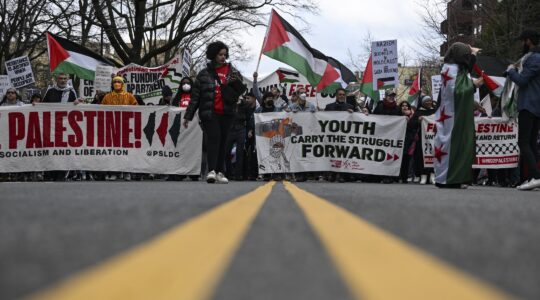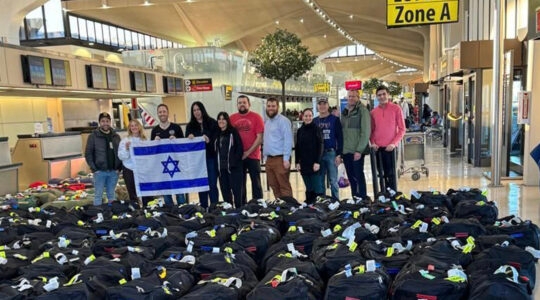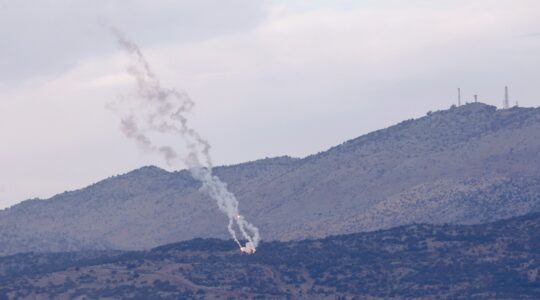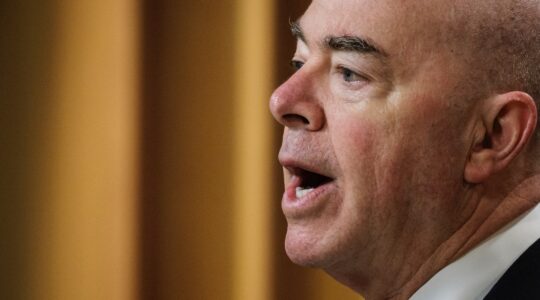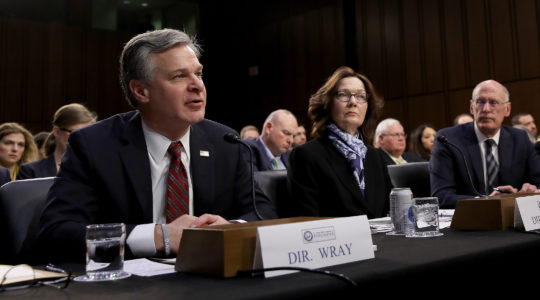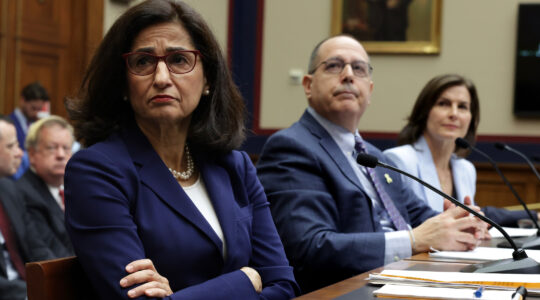ALBUQUERQUE, N.M. (JTA) – Miles and miles of flat, open desert punctuated by one soaring mountain reaching for the skies – the Land of Enchantment is so perfect a setting for a Jewish Renewal retreat it’s almost self-parody.Certainly it suits the drum circles, the tie-dyed shirts and the sudden outbursts of Old World niggunim, or Jewish melodies, that give any Renewal gathering, including this one, its singular aesthetic.But less than half of the 700 people here in early July for the Aleph Kallah, a weeklong immersion in the New Age, neo-Chasidic Jewish Renewal style of worship developed in the late 1960s, belong to one of the movement’s 40 affiliated communities.Many of the rest were Reform, Reconstructionist, Conservative and even Orthodox, including a healthy number of rabbis and cantors. These denominational interlopers were not jumping ship. They had come, they said, to deepen their spiritual connections, experience a week of intentional Jewish community and take some of that home to their own congregations.It seems that Jewish Renewal, often derided as a fringe movement, is becoming a groovy kinda tool not just for individual self-fulfillment but for synagogue revitalization across much of the denominational spectrum.”I’m trying to find my own deep personal connections with spirituality and the traditions, and bring back to my congregation the same resources for people who are disenfranchised from traditional practice,” said Greg Raskin, program director of Congregation B’nai Emunah, a midsized Conservative synagogue in Tulsa, Okla.Many of the otherwise-affiliated participants don’t buy the whole Renewal package. Like Raskin, they pick and choose.Raskin decided on a morning class in Jewish meditation. He spent his afternoons learning the basics of Jewish Renewal as laid down by the movement’s founder, 83-year-old Rabbi Zalman Schachter-Shalomi, a former Chabad Lubavitch emissary.”I could see introducing more niggunim in different parts of our liturgy,” Raskin said, musing about what he might bring back with him.”And we’re thinking of becoming a Synaplex congregation,” he said, referring to a national program that encourages congregations to offer an array of Jewish experiences one Shabbat a month. “I could see offering meditation as a class, or a davening option, as part of that.”This cross-pollination is exactly what Renewal leaders want. They insist, although there are congregations that call themselves Renewal and affiliate with the umbrella body of its activities worldwide, Aleph: Alliance for Jewish Renewal, that Jewish Renewal is not a denomination but an approach to Judaism, especially to Jewish prayer.Any Jew or congregation can use the approach, they say.”You see its influence in Synaplex, where synagogues are offering different kinds of services,” said Rabbi Marcia Prager, dean of Aleph’s rabbinic program and spiritual leader of P’nai Or in Philadelphia. “You see it in the way Renewal melodies have made their way into synagogues and summer camps.””You see it in Torah readings that are translated simultaneously into English, in the group aliyah, in the spontaneity – asking people to offer their own prayers” at specific parts of the service, added Rabbi Shawn Zevit, teacher and outreach director for the Jewish Reconstructionist Federation.The kallah, Hebrew for “community,” is held on alternate years by Aleph and functions more as a retreat than a scholarly symposium, trying to model for a week a Jewish community based on Renewal teachings.”We come together for prayer, study and community, so we remember what a spirit-filled life feels like,” said Aleph Executive Director Deb Kolodny at the opening ceremony July 2.There was a general atmosphere of playfulness, interpersonal kindness, emotional openness and spiritual intensity, all values from the ’60s world in which the movement emerged. Spontaneous hugs were rampant; so was a marked absence of irony.Many participants used the forgiving atmosphere to experiment with new, more public styles of worship and to talk about deep feelings and beliefs they usually hide.”You have permission to be awkward,” Zevit told the class on Renewal-style prayer that he co-led with Prager.One participant in the overflowing class, Marc Garvin, a classical guitarist from Houston, said that “at best” he “can only stand two hours” of his Conservative synagogue’s usual 3 1/2-hour Shabbat service.Garvin wished he “could bring the meaningfulness of prayer” he experienced at the kallah back to his congregation, but said he considers Renewal a tool for improving, not replacing, those services.”It’s not either-or, it’s this-and,” he said. “It’s about putting in a piece, putting in more intentional prayer, bringing it to life.””Even if it’s making one small step, like standing up and moving during services instead of sitting,” interjected fellow Houston resident Marian Bell, who worships at several synagogues. “That’s a Renewal piece, and people are thirsty for it.”Many participants at the gathering here said their synagogues have been influenced by Renewal ideas.Terry Gips is a member of Temple Israel, a large Reform synagogue in Minneapolis, and is involved in a Renewal havurah, or prayer community. He said just about everyone in the havurah also belongs to a denominational congregation and have taken their Renewal ideas with them.”All four Conservative shuls now do Carlebach services once a month, and they are packed,” Gips said, referring to the exuberant, music-filled prayer style popularized by the late Shlomo Carlebach, who worked closely with Schachter-Shalomi. “And one of the Orthodox shuls brought in Sami Barth,” a well-respected Renewal rabbi, “for a Shabbaton.””We’re seeing Renewal pop up all over the place,” he enthused. “For those of us who are into it, it’s great. Zalman’s dream of infusing the Jewish world is happening.”
